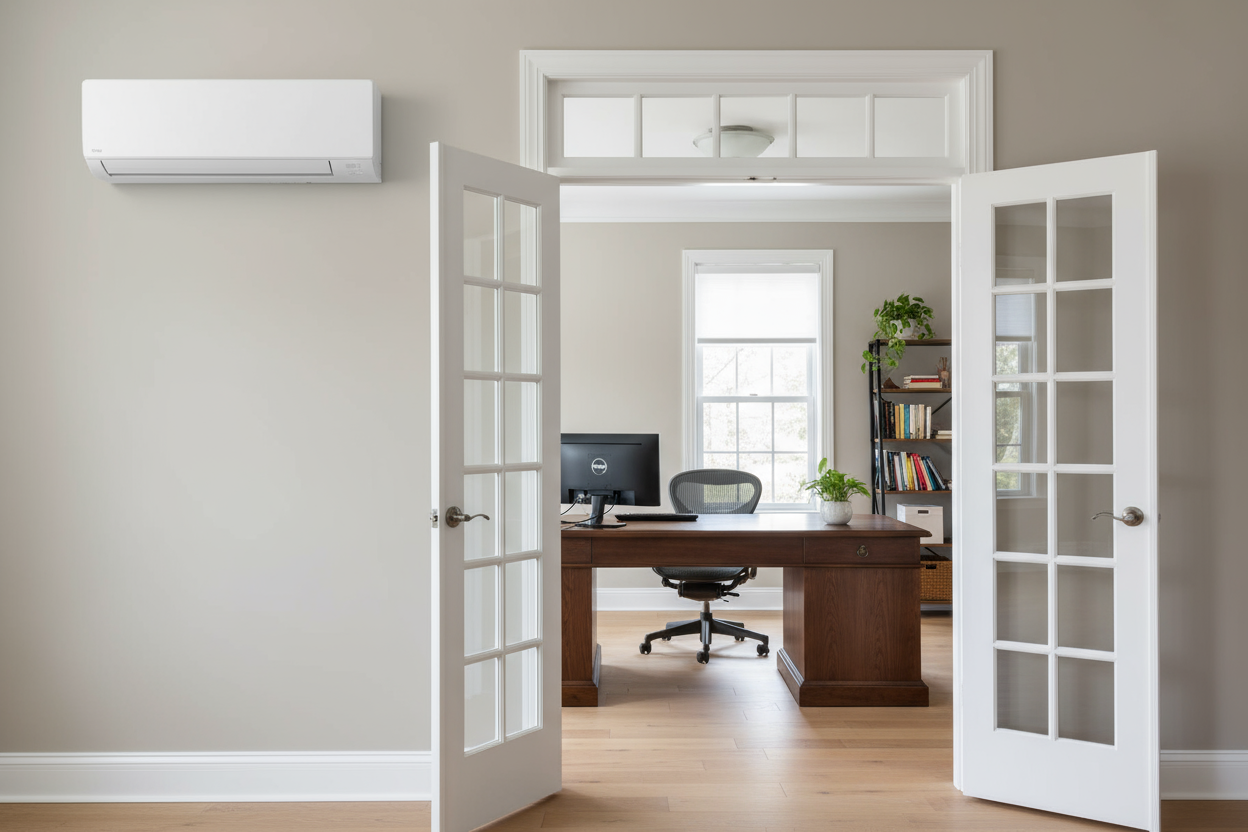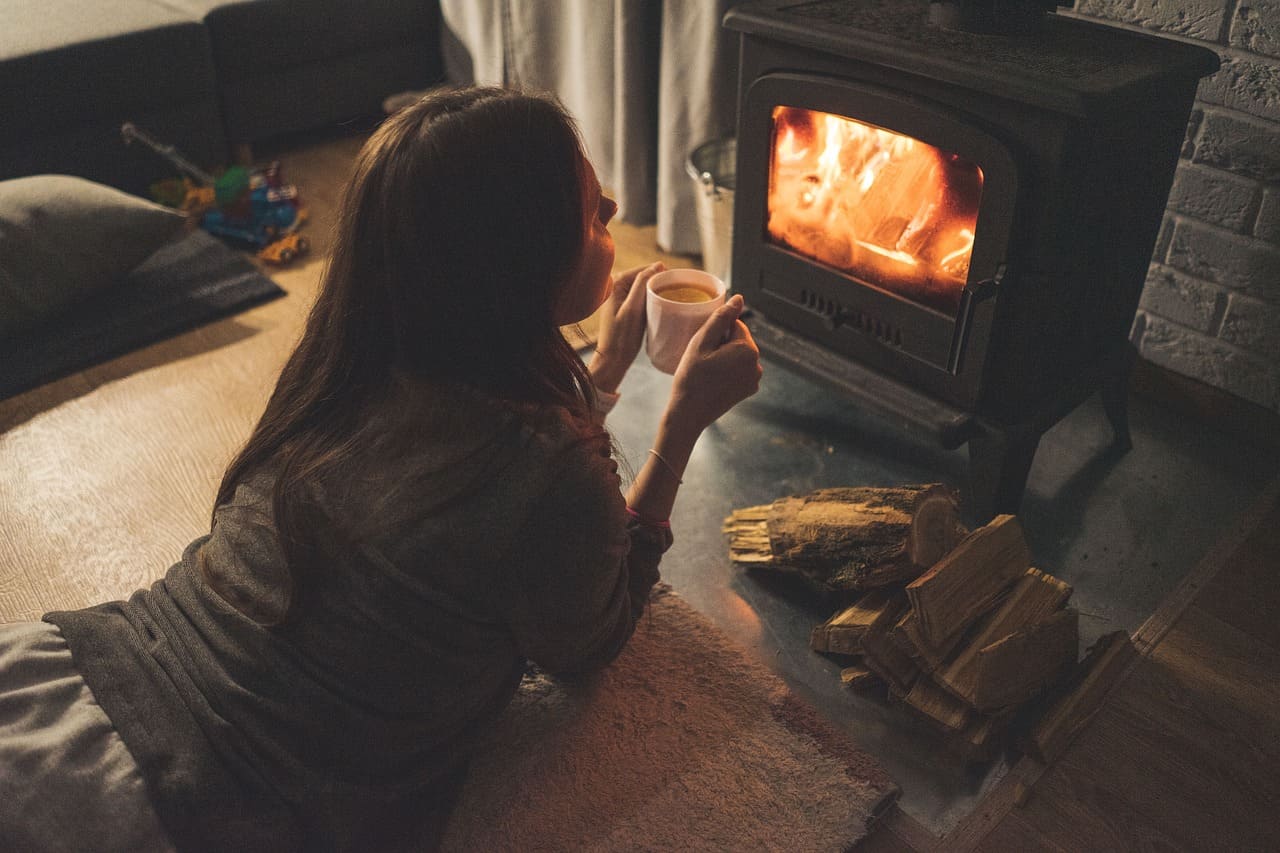TURBRO Mini Split AC Frequently Asked Questions (FAQs)
General Guide
What is a Mini Split AC?
A mini split AC, also known as a ductless mini split system, is an air conditioning system that consists of two main components: an outdoor compressor/condenser unit and an indoor air-handling unit. Unlike central air conditioning systems that require ductwork to distribute cooled air throughout a building, mini split ACs use small refrigerant lines that run between the two units to circulate cooled air directly into specific zones or rooms. Mini split ACs are popular in homes and businesses where traditional ducted systems are impractical or impossible to install, such as in older buildings or those with limited space. They are also known for their energy efficiency, quiet operation, and ease of installation.
What are EER and SEER Ratings?
EER (Energy Efficiency Ratio) and SEER (Seasonal Energy Efficiency Ratio) are two ratings used to measure the energy efficiency of air conditioning systems.
EER is a ratio that measures the cooling capacity of an air conditioning system (in British Thermal Units or BTUs) divided by the amount of energy it consumes (in watt-hours). A higher EER rating means that the air conditioning system is more energy efficient and can provide the same level of cooling with less energy consumption.
SEER is similar to EER, but it takes into account the energy efficiency of an air conditioning system over an entire cooling season, rather than just at one specific point in time. SEER is calculated by dividing the total cooling output of an air conditioning system over a season by the total energy consumption during that same period. Like EER, a higher SEER rating means a more energy-efficient air conditioning system.
Both EER and SEER ratings are important to consider when selecting an air conditioning system. Higher-rated systems may cost more initially, but they can save money in the long run through lower energy bills. It is also important to note that SEER ratings are typically higher than EER ratings for the same system, as SEER takes into account seasonal variations in temperature and energy consumption.
What is a BTU?
BTU stands for British Thermal Unit, which is a unit of measurement used to quantify energy. Specifically, a BTU is the amount of heat required to raise the temperature of one pound of water by one degree Fahrenheit at sea level.
In air conditioning systems, BTUs are used to measure cooling capacity. The higher the BTU rating, the greater the cooling capacity of the air conditioning system. For example, a small room may require an air conditioner with a cooling capacity of 5,000 BTUs while a larger room or open-concept living area may require an air conditioner with a cooling capacity of 10,000 BTUs or more.
It is important to note that the size and layout of a room or space, as well as other factors such as insulation and outdoor temperatures, can also impact the cooling capacity needed. Therefore, it is important to choose an air conditioning system with the appropriate BTU rating for the specific space it will be used in.
Air conditioning systems with too low of a BTU rating may struggle to cool the space effectively, while systems with too high of a BTU rating may cycle on and off frequently, leading to inefficient energy usage and potential wear and tear on the system.
When choosing an air conditioning system, it is important to consider the square footage of the space to be cooled, as well as any other factors that may impact cooling capacity such as ceiling height, number of windows, and insulation. Many air conditioning manufacturers provide sizing calculators or guidelines to help determine the appropriate BTU rating for a given space.
How do I choose a mini split air conditioner?
Choosing a mini split air conditioner involves several factors. Here are some key things to keep in mind:
- Size of the space: The size of the space you want to cool is the most important factor to consider. A mini split air conditioner's cooling capacity is measured in BTUs, so make sure to select a unit with a BTU rating appropriate for the size of the room.
- Number of indoor units: Mini split air conditioners typically come with one outdoor unit and one or more indoor units, depending on the number of zones you want to cool. Determine how many indoor units you will need based on the number of rooms or zones you want to cool.
- Energy efficiency: Look for mini split air conditioners with high EER and SEER ratings to ensure energy efficiency and cost savings.
- Noise level: Some mini split air conditioners are quieter than others, so if noise is a concern, look for a unit with a low decibel rating.
- Installation requirements: Mini split air conditioners typically require professional installation, so consider the installation requirements of the unit you choose, including the placement of the indoor and outdoor units, electrical requirements, and any necessary modifications to your home or building.
- Brand reputation and warranty: Choose a reputable brand with a solid warranty to ensure you get a reliable and long-lasting unit.
- Budget: Mini split air conditioners can vary in price, so determine your budget and choose a unit that fits within your price range.
Overall, selecting a mini split air conditioner involves assessing your cooling needs and considering factors such as energy efficiency, noise level, installation requirements, brand reputation, and budget to make an informed decision. It is recommended to consult with a qualified HVAC technician to help determine the appropriate unit for your specific needs.
Mini-Split vs. Central Air Conditioner: How to Decide Which One Is Best for You?
When deciding between a mini-split and central air conditioner, there are several factors to consider, including the size of the space to be cooled, energy efficiency, installation requirements, and cost.
Here are some points to help you decide which one is best for you:
- Cooling capacity: If you have a large home or commercial space to cool, a central air conditioning system may be more appropriate as it can efficiently cool larger areas. Mini split air conditioners are better suited for smaller spaces or individual rooms.
- Energy efficiency: Mini split air conditioners are generally more energy-efficient than central air conditioning systems as they allow for zone cooling, meaning you only cool the areas you need. Central air conditioning systems typically cool the entire house or building, even if only a portion of it is in use. If you spend a majority of time in only one or two rooms, mini split might be the better choice.
- Installation requirements: Mini split air conditioners are easier to install than central air conditioning systems as they require minimal modifications to the home or building and can be installed without ductwork. Central air conditioning systems, on the other hand, require ductwork installation, which can be complex and expensive in an already-existing home.
- Cost: Mini split air conditioners are generally less expensive than central air conditioning systems, both in terms of the initial cost and ongoing maintenance costs. However, if you have a large space to cool, the cost of multiple mini split units may add up to more than a central air conditioning system.
Ultimately, the decision between a mini-split and central air conditioner will depend on your specific cooling needs, budget, and preferences. If you have a smaller space to cool and value energy efficiency and ease of installation, a mini-split system may be the best choice. If you have a larger space to cool and prefer a centralized cooling system, a central air conditioning system may be a better fit. Consulting with a qualified HVAC technician can also help you determine which option is best for your specific needs.
What is the lifespan of a Mini Split AC unit?
The lifespan of a mini split AC unit can vary depending on factors such as the brand and model, how well it is maintained, and how frequently it is used. On average, a well-maintained mini split AC unit can last anywhere from 10 to 20 years.
Regular maintenance of your mini split AC unit, such as cleaning the air filters, ensuring proper refrigerant levels, and inspecting the unit for any signs of wear and tear can help extend its lifespan. It's also important to have your unit professionally serviced on a regular basis to ensure optimal performance and identify any potential issues before they become major problems.
Additionally, the quality of the installation of your mini split AC unit can also impact its lifespan. Hiring a qualified HVAC professional to install the unit correctly can help ensure it operates efficiently and lasts as long as possible.
Overall, with proper maintenance and care, a mini split AC unit can provide reliable and efficient cooling for many years.
I am planning to move soon, can I take the system with me?
Yes, you can take a mini split AC system with you when you move. However, it is important to keep in mind that the system will need to be professionally uninstalled and then reinstalled at the new location by a qualified HVAC technician.
During the uninstall process, the technician will remove the indoor and outdoor units and disconnect the electrical and refrigerant lines. These components will need to be transported safely to the new location to avoid damage.
Once at the new location, the technician will need to reinstall the units, connect the electrical and refrigerant lines, and test the system to ensure it is working properly. It's important to note that the cost of uninstalling and reinstalling a mini split AC system can vary depending on the complexity of the installation and the distance between the old and new locations.
Before deciding to take a mini split AC system with you when you move, it's important to consider the cost of uninstallation, transportation, and reinstallation, as well as the condition of the system and whether it is worth the investment to move it. In some cases, it may be more cost-effective to purchase a new mini split AC system for your new location rather than moving an existing system.
How can I lower my energy bills in the winter?
Here are some tips to help you lower your energy bills during the winter when using a mini split AC:
- Set the temperature appropriately: Lowering the temperature on your mini split AC’s heat setting by just a few degrees can help reduce energy consumption and save you money on your energy bills. Aim to keep your home at a comfortable temperature rather than excessively warm.
- Use the timer function: Most mini split AC units come with a timer function that allows you to set the system to turn off or lower the temperature automatically when you are not at home or when you are asleep. This can help reduce energy consumption and save you money on your energy bills.
- Insulate your home: Proper insulation can help reduce heat loss, keeping your home warmer and reducing the workload on your mini split AC system. Check your doors, windows, and other areas where heat can escape and consider adding insulation if needed.
- Keep your mini split AC clean: A dirty mini split AC unit can reduce its efficiency and increase energy consumption. Regularly clean the filters and coils to ensure optimal performance.
- Use curtains or blinds: Closing curtains or blinds during the night or when the sun is not shining directly on the windows can help reduce heat loss and keep your home warmer, reducing the workload on your mini split AC.
- Consider a programmable thermostat: Installing a programmable thermostat can help you set the temperature of your mini split AC system automatically based on your schedule, reducing energy consumption and saving you money on your energy bills.
By following these tips, you can reduce energy consumption and save money on your energy bills while still enjoying the benefits of your mini split AC system during the winter months.
How To Use Your Mini Split AC
Why is my air conditioning unit blowing out warm air when my unit is set to cooling mode?
There are several reasons why your air conditioning unit may be blowing out warm air when it's set to cooling mode. Here are a few possible causes:
- Incorrect thermostat settings: Check to make sure your thermostat is set to the correct mode (cooling) and that the temperature is set to a temperature lower than the current room temperature.
- Dirty air filters: Dirty air filters can restrict airflow, causing the unit to work harder and less efficiently, resulting in warm air blowing from the unit. Check and clean or replace your air filters if needed.
- Refrigerant leaks: A refrigerant leak can cause your air conditioning unit to blow out warm air. This issue requires a professional to inspect and repair the leak and recharge the refrigerant.
- Faulty compressor: The compressor is the heart of the air conditioning unit and is responsible for cooling the air. If the compressor is not working correctly, it can cause warm air to blow from the unit. A faulty compressor requires a professional to inspect and repair the issue.
- Dirty coils: Dirty coils can also restrict airflow and reduce the efficiency of your air conditioning unit, causing it to blow out warm air. Have your coils cleaned by a professional if needed.
- Electrical issues: Electrical problems such as a faulty capacitor or a malfunctioning thermostat can also cause your air conditioning unit to blow out warm air. These issues require a professional to diagnose and repair.
If you're experiencing warm air blowing from your air conditioning unit, it's best to contact a professional HVAC technician to diagnose and repair the issue. They can identify the root cause of the problem and provide the necessary repairs to ensure your unit is working correctly.
Maintaining Your Mini Split AC
How often should I clean the filter?
The frequency of cleaning your mini split AC filter will depend on factors such as usage, indoor air quality, and the environment. However, as a general rule, it is recommended to clean your mini split AC filter every two to four weeks during the peak season of usage.
If you live in an area with high levels of pollution, dust, or pet dander, you may need to clean the filter more frequently. Similarly, if you use your mini split AC unit frequently you may need to clean the filter more often.
To clean the filter, follow these steps:
- Turn off the mini split AC unit.
- Locate the filter on the indoor unit. Depending on the model, the filter may be located behind a panel or grille.
- Remove the filter from the unit.
- Clean the filter with a soft brush or vacuum cleaner to remove any dirt and debris. If the filter is heavily soiled, you can also wash it with water and mild soap. Allow the filter to dry completely before reinstalling it.
- Reinstall the filter back into the unit.
- Turn the mini split AC unit back on.
Regularly cleaning the filter on your mini split AC unit can help ensure optimal performance, improve indoor air quality, and prolong the lifespan of your unit. If you're unsure about how often you should clean your mini split AC filter, consult the manufacturer's instructions or contact a qualified HVAC technician for guidance.
Do I need to clean the outdoor unit?
Yes, you should clean the outdoor unit of your mini split AC to maintain its efficiency and prolong its lifespan. The outdoor unit is responsible for releasing the heat absorbed from the indoor air by the evaporator coil, and it is exposed to outdoor elements such as dirt, debris, leaves, and other materials that can accumulate and reduce its efficiency.
Here are the steps to clean the outdoor unit:
- Turn off the power to the mini split AC unit by switching off the circuit breaker.
- Clear any debris, leaves, or branches that may be on or around the unit.
- Remove the fan guard from the top of the unit by unscrewing the fasteners or lifting it off.
- Use a soft brush or a gentle stream of water to clean the fan blades, the coil, and the fins. Be careful not to bend or damage the fins while cleaning.
- If the fins are bent, use a fin comb to straighten them out.
- Check the drainage line to make sure it is not clogged with dirt or debris.
- Reinstall the fan guard.
- Switch on the circuit breaker and test the unit to ensure it is working correctly.
It's recommended to clean the outdoor unit of your mini split AC at least once a year, preferably in the spring, before the start of the cooling season. However, if you live in an area with a lot of dust, dirt, or pollution, or if you notice a decrease in the performance of your mini split AC unit, you may need to clean it more frequently. If you're unsure about how to clean the outdoor unit of your mini split AC, consult the manufacturer's instructions or contact a qualified HVAC technician for guidance.
Have a question that’s not listed here?
If you don’t see an answer to your question or if you need technical support with your food composter, please call us at (323) 438-3334 or email us at support@turbro.com.






2 comments
Hi, could you please send the details to support@turbro.com? Our customer service team will be happy to assist you.
I just installed a second turbro mini split. The first one works great. The second one doesn’t seem to put out heat. I did the same installation on both of them (1200BTU 220V). What could possible have gone wrong?